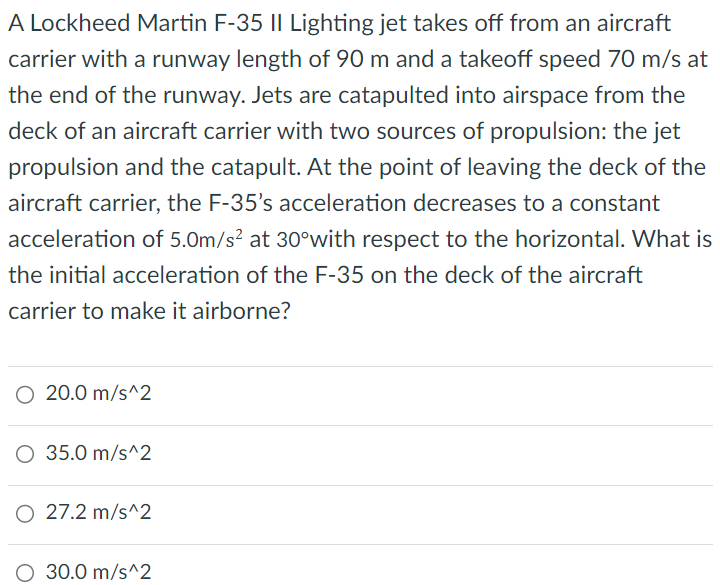A Lockheed Martin F-35 II Lighting jet takes off from an aircraft carrier with a runway length of 90 m and a takeoff speed 70 m/s at the end of the runway. Jets are catapulted into airspace from the deck of an aircraft carrier with two sources of propulsion: the jet propulsion and the catapult. At the point of leaving the deck of the aircraft carrier, the F-35's acceleration decreases to a constant acceleration of 5.0 m/s2 at 30∘with respect to the horizontal. What is the initial acceleration of the F-35 on the deck of the aircraft carrier to make it airborne? 20.0 m/s^2 35.0 m/s^2 27.2 m/s^2 30.0 m/s^2
